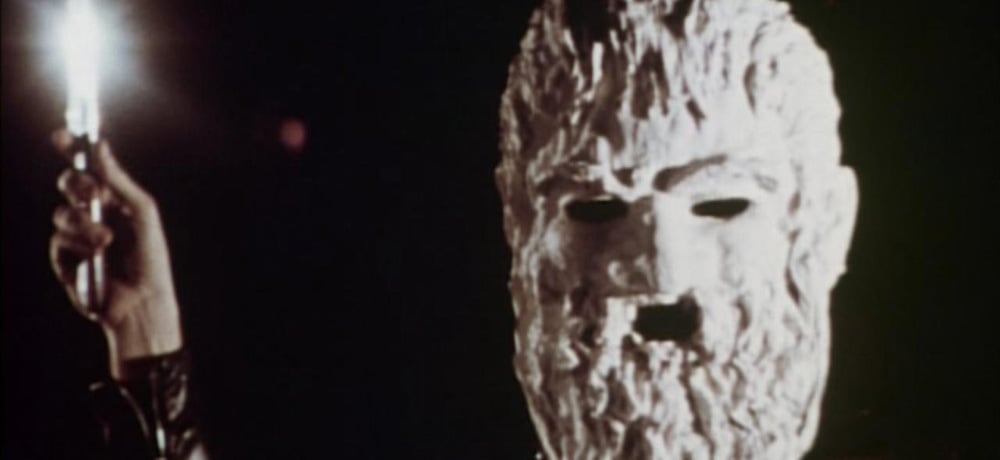


Perhaps before my time, and definitely out of my purview, a trip to the grindhouse sounded fascinating; sometimes a haven for transgression, other times merely an easy in for exploitation. There’s also a good chance that the film showing was an independent - the little fish flailing in the big pond - as the grindhouse was their lighthouse. The Last House on Dead End Street (1977) seems to be aiming for a “why not both?” scenario, and coupled with an early reputation as a possible snuff film, spent some quality time on the seedier screens. That it turns out to be effective in its own way is the real 42nd Street miracle.
Talk about a sticky wicket: The Last House on Dead End Street didn’t start out with that title (shocking); nor was it made in ‘77 (double shock please). Originally conceived by SUNY graduate Roger Watkins as a Manson Family biopic, it soon turned into the meta tale of a young ex-con Terry (Watkins), who’s determined to show society that he's somebody by making snuff films - the next frontier in art. The completed film, titled The Cuckoo Clocks of Hell, cost under $3,000, all in. It was also 3 hours long. It was then trimmed down to be shown at Cannes in ‘73, but that didn’t pan out. After three years of court with an ex-crew member, the film was free to be released. In ‘77 Cinematic Releasing Corporation did just that as The Fun House, and cut it down to a paltry 77 minutes; the title we know today comes from a ‘79 re-release.
There really isn’t much plot beyond the initial description; instead Watkins posits the film as a character study, even if the characters are less than savoury. The woman who left her alcoholic husband to only end up somewhere worse, the unscrupulous porn director, and Watkins himself are given moments not necessary to the story, yet offer shading in a sub-genre subsumed by darkness.
Now, I’m not saying it’s a light film; goodness no. I can understand why someone in ‘77 would have the vapours for a film like this, that dares to show things like that. Watching now, the offences seem much less potent (with the exception of a white woman in blackface at a Hollywood party being whipped - whatever half-assed metaphor Watkins was going for falls horrifyingly flat), especially since the veil of mystery surrounding the film has been lifted; since people have been identified - and breathing - the snuff aura all but dissipated. So, after all the mystique has vanished and Watkins' original vision is left to the Movie Gods, what’s left?
Something unique, to be sure. The Last House on Dead End Street (it’s the best title, right? Like if Wes Craven taught elementary instead of college) does fit in with the home invasion crowd, if the killer invited people over to his place instead and they actually showed up; a (mostly) singular setting is not only cost effective, but essential to the second half’s surreal turn.
This is really why Watkins has brought us here. His correlations between sex, violence, and art are crude at best when spoken, but he offers a keener visual sense as Terry and his merry band of psychotic mask wearing burnouts slash and terrorize their very own; theatre lighting and staging for many of these later scenes set it apart from most grindhouse by a sense of ambition - or pretension, depending on how good your seats are. (Watkins was a friend of Otto Preminger.)
Again, going by the collective scraps of film spliced together that we have today, one can only assume that he wanted to tell a story about these fringe characters without judgement; while Terry lives out his dream of artistic nirvana, Watkins was living his as well. It would hardly be fair or honest of him to judge; he seems to reserve that not for his characters but rather the entire film industry (or at least his idea of it). A self saboteur says what?
No, Watkins’ screed is born of (then) New Hollywood’s turn towards the counterculture with artistic freedoms that simply weren’t theirs to offer; at the end of the day, it’s still a business. And for less than the price of a used car, he pushed back with imagery meant to anger, disturb, and sicken. To provoke. With purpose? That’s hard to say; maybe Watkins was just looking to stir fry some shit, or perhaps he really was trying to subvert the system.
At the end of the day though, The Last House on Dead End Street became part of it. Video caught up and DVD did too, Watkins came clean as star/writer/director/editor/auteur savant, and the film now holds a chair at a specialty Blu-ray boutique (but has yet to be called upon). Respectability has its costs, of course; it’s very hard to be seen as taboo when your dismemberment scene makes Herschell Gordon Lewis’ films look positively Savini-esque, and your “gritty doc” style in the first half just makes green actors look brown. But here’s the thing: He made this; a film that exists. Have you made yours yet?
The Last House on Dead End Street will hopefully be available on Blu-ray soon.
Next: Indie Horror Month 2021 Marketplace: Check Out These Killer Fiction and Non-Fiction Books from Indie Authors